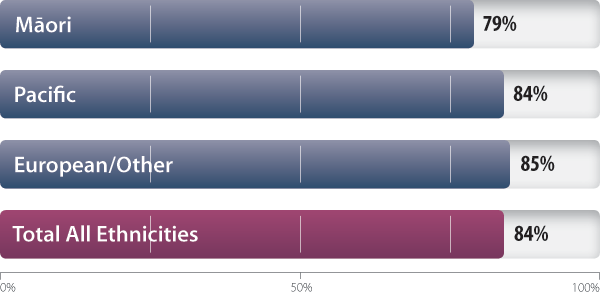In this report 
View
/ Download pdf version of this report
Monitoring diabetes in people over 75
In the March 2012 issue of Best Tests, bpacnz published an article discussing testing
for CVD, diabetes and renal disease in elderly people. This article suggested that many laboratory tests become more difficult
to interpret in elderly people because of the effects of medicines and declining general health. However, monitoring diabetes
remains important for elderly people due to its long-term degenerative nature and associated co-morbidities and complications.
Recommendations for monitoring diabetes in people aged over 75 years
It is recommended that patients with diabetes receive an annual diabetes review including testing
of HbA1c and microalbumin to calculate an albumin/creatinine ratio.1 This report will discuss whether
these tests are being requested at an appropriate rate for elderly people (aged over 75 years) with diabetes. The data
in this report is for all patients dispensed either oral medication or insulin for diabetes, and the HbA1c and
microalbumin tests requested for those patients. The data in this report was sourced from the Ministry of Health National
Collections.2,3
National data by ethnicity
Appropriate testing of HbA1c
In elderly people with diabetes, HbA1c should be tested annually as part of an annual diabetes review.1 Some
patients may need to be tested more often; however more frequent testing is not necessary in patients with stable, well
controlled diabetes.
Ongoing HbA1c testing is important for monitoring glycaemic control and predicting the risk of further complications.

% of people ≥75 years with
diabetes who received at least one HbA
1c test in 2011
Testing for microalbuminuria
Diabetic nephropathy is one of the most common forms of chronic kidney failure in the developed world and occurs in
more than 30% of people with diabetes.4 Diabetic nephropathy generally takes six to 15 years to develop and
therefore is more prevalent in older people with a long history of diabetes.4
Microalbuminuria is the first sign of nephropathy, but not all people with microalbuminuria will progress to full nephropathy.
If detected early, microalbuminuria can be reversible with good glycaemic control and management of blood pressure.
Nationally, the rate of microalbumin testing in elderly patients is lower than we would expect. In older patients, the
specifity of the albumin:creatinine ratio is reduced,5 however it remains the best way to detect early stage
microalbuminuria and regular monitoring is important in people with diabetes, regardless of their age.

% of people ≥75 years with
diabetes who received at least one microalbumin test in 2011
References
- Diabetes New Zealand. Annual diabetes check-up. Available from: www.diabetes.org.nz (Accessed
May, 2012).
- Ministry of Health. Pharmaceutical Collection. (Accessed May, 2012).
- Ministry of Health. Laboratory Claims Collection. (Accessed May, 2012).
- Philips A. Diabetic nephropathy. Medicine 2011;39(8):470-4.
- Houlihan C, Tsalamandris C, Akdeniz A, Jerums G. Albumin creatinine ratio: a screening test with limitations. Am
J Kid Dis 2002;38(6):1183-9.
- National data excludes Nelson Marlborough DHB and South Canterbury DHB areas due to laboratory data recording discrepancies
in these areas.